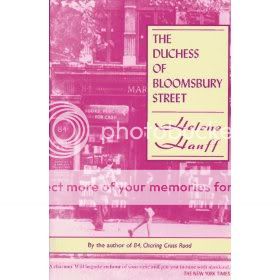Originally published in March 2005, on my original 52 Books blog.
84 Charing Cross Road has been described as a “love affair between a woman and a book-shop”. For 20 years, Helene Hanff conducted a business correspondence with a second-hand bookshop in London that developed into a friendship between her and the bookshop staff, especially between her and Frank Doel (and later his wife and neighbour as well).
The two main correspondents, Hanff and Doel, quickly seem to have reached an understanding of each other, and one sees in their correspondence a pair of people with a similarly witty sense of humour, although Doel is more restrained (for obvious reasons).
This is one of those books in which nothing much happens on the surface, it is just a little slice of life, as is the companion story, The Duchess of Bloomsbury Street, Hanff’s journal from her visit to London. She had been planning the visit for nearly 20 years, but always kept getting put off, usually because of financial troubles.
84 Charing Cross Road was made into a charming movie, which is how I first learned about it. I had planned to include the book in my original reading challenge, but it is a popular book and it was never available when I went to the library. Now that I have finally read it, it seems almost amazing how such a good movie could be made from so little material, but when I started thinking about it, there is actually plenty there to work with, and of course the movie was fleshed out a bit (e.g. the scene where Hanff gets arrested).
Rating: A great book that should especially appeal to bibliophiles. 4+ stars.


Comments